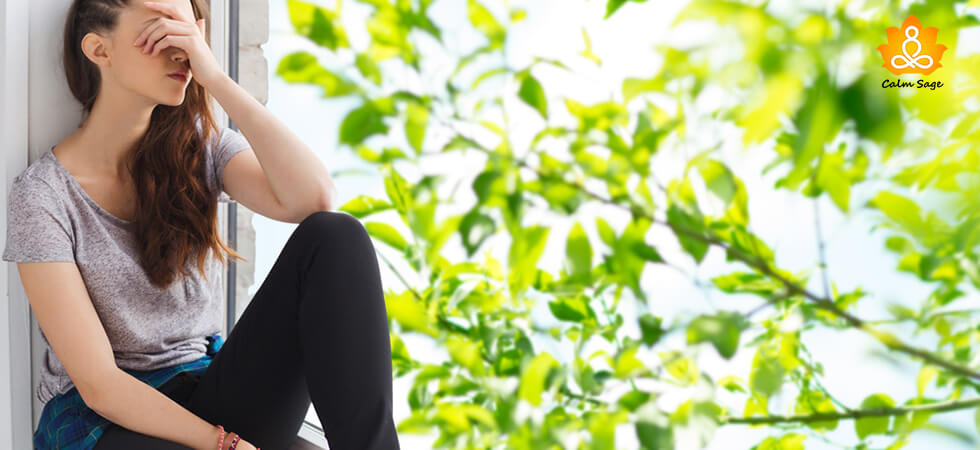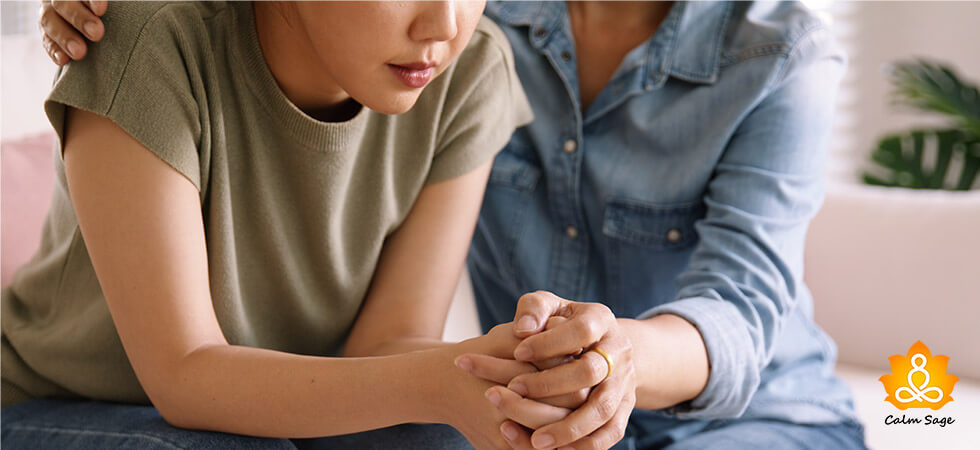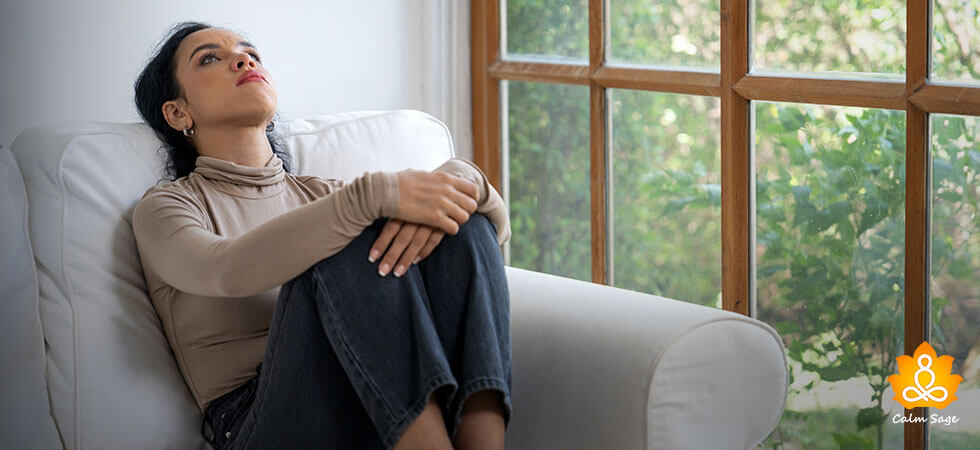Spring Depression: The “Reverse SAD” You Need To Know About

You’re familiar with “winter blues”, now get ready to learn about the “reverse SAD” or summer depression. Seasonal depression is a disorder where you experience depression-like symptoms, however, only when seasons change.
In the DSM-5, seasonal depression or seasonal affective disorder (SAD) is categorized under major depressive disorder. But there’s a catch!
While the seasonal affective disorder symptoms often occur during the winter months and improve by the time spring comes, the reverse SAD, or spring depression does the opposite.
When you experience mood changes, low energy, and other depression-like symptoms during the spring or summertime, it can be referred to as “spring depression”. While it is understandable to experience a low mood during the winters due to lack of sunlight, you must be wondering what triggers summer or spring depression.
It turns out that the long summer days, the sweaty weather, and the spring blossom might have to do something with depression-like symptoms. Let’s explore the signs, causes, and treatment options for spring depression in this blog!
What Does Spring Depression Look Like?
The symptoms of spring depression don’t differ much from seasonal affective disorder symptoms. Seasonal depression symptoms may occur differently in everyone. As the springtime approaches, you can notice symptoms like:
- Low mood
- Persistent feelings of sadness
- Persistent feelings of hopelessness
- Low or no interest in activities you normally enjoy
- Low motivation to carry out daily activities
- Increased lethargy and restlessness
- Sleep difficulties
- Trouble concentrating
- Trouble memorizing
- Weight changes (a low appetite or eating too much)
- Increased irritability and agitation
- Increased feelings of anger and aggression
- Thoughts of suicide or self-harm
Apart from these, you may also notice symptoms like brain fog without any understanding of the whys.
If you’re having suicidal thoughts, please immediately contact your nearest crisis helpline. You can also reach out to Crisis Text Line by texting HOME to 741741 or call the National Suicide Prevention Lifeline at 1800-273-8255.
What Causes Spring/Summer Depression?
Winter depression or winter blues is the more common form of seasonal depression than spring depression so there is not much evidence on why or what causes spring or summer depression. However, there are a few factors that may cause spring depression:
1. Increased Sunlight or Warm Weather
If you’re like me who can’t deal with the hot weather then it could be a factor that might be causing you to feel depressed. Sunlight can boost your mood but increased sunlight can have the opposite effect. Extreme heat and sunlight can leave you with a low mood, no motivation, and irritability.
Also, the changes in season can disrupt your sleep-wake cycle. Any disruptions in the circadian rhythm can also cause depressive-like symptoms.
2. Hormonal Imbalance
We experience winter blues when the levels of serotonin in our bodies are low. Serotonin is the neurotransmitter that helps regulate our mood and emotions among other functions. Having too much and too low levels of serotonin can also affect our mood. During the winter, serotonin is low and melatonin, the hormone that facilitates sleep, is high.
During summertime, the reverse happens. The sudden sunlight produces low melatonin so you end up sleeping less than you need. The lack of sleep can eventually lead to depression-like symptoms. Too much serotonin, on the other hand, can contribute to social anxiety, irritability, and restlessness.
3. Allergies
If you struggle with seasonal allergies, then you may feel groggy and miserable most of the time. These changes in the mood due to seasonal sensitivities can also cause a drop in your mood, causing depression.
Other factors that may cause summer depression can include:
- Family history of major depressive disorder with seasonal pattern
- History of other mental health disorders
- Changes in job shifts
- Living in a humid or hot climate
Can Spring Depression Be Treated?
As with any other depressive disorder, spring depression needs professional diagnosis and treatment. When your symptoms of depression last longer than two weeks, begin to affect your relationships and cause suicidal thinking, it is recommended you immediately seek professional help.
1. Cognitive-behavioral therapy (CBT): is one of the most effective treatments for depression. The approach involves teaching techniques to identify and address negative thoughts and patterns. With CBT, you can learn to reframe your thoughts and change your behavioral patterns.
3. Interpersonal therapy: is an approach designed to treat depression. This approach helps you explore issues in your life that could be causing your symptoms of depression.
3. Medications: If your symptoms of depression are severe, then a psychiatrist may recommend medications as a treatment. However, it is strongly suggested that you consult with a physician before taking any prescribed medication as many can have side effects that can worsen your condition.
Any Coping Tips To Deal With Summer/Spring Depression?
You don’t have to struggle with summer/spring depression and wait for winters to come to relieve you of your symptoms. There are some effective coping techniques you can use to deal with spring depression:
1. Having a good sleep schedule:
Lack of sleep can increase your depressive mood. So you need to pay attention to your sleep schedule. To improve your sleep, keep your room cool, use blackout curtains, and comfortable bedding. Make sure you wake up and sleep at the same time every day.
2. Keep yourself cool:
Sensitivity to too much heat can also make you irritable so to prevent your mood from getting bad to worse, keep yourself cool during the hot weather. Keep yourself hydrated, use cooling fans, and dress lightly.
3. Physical activity will help:
Who wants to exercise in the hot weather, right? But to relieve symptoms of depression and improve your mood, exercise is a good option. Just remember to stay hydrated and cool when you exercise. Try swimming or early morning jogs.
4. Meditate or journal:
Both of these practices can help you identify and address your negative thinking, feelings, and emotions. You can also try doodling or art therapy during summertime.
5. Talk to your loved ones:
When your mood seems to get worse, it is always best to reach out to your loved ones and talk to them. Let your support system give you the help you need.
6. Routine is important:
Having a set routine can help you from feeling overwhelmed, lethargic, hopeless, and unmotivated. Having a routine will help you balance your chores and feel structured.
7. Eat healthily:
When your mood is down, eating healthy can be the last thing on your mind. However, not eating right can also contribute to your symptoms of depression. So if you’re experiencing spring or summer depression, try to eat well, depression-relieving foods. And don’t forget to drink lots of water!
I hope this article helped you learn more about spring/summer depression or the “reverse SAD”. For more, you can always reach out to us at info@calmsage.com or DM us on social media.
If you’ve ever experienced summer/spring depression, how did you deal with it? Share your thoughts with us and let us know if you’re ready for summer!
Take care!




















